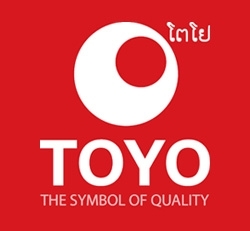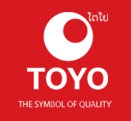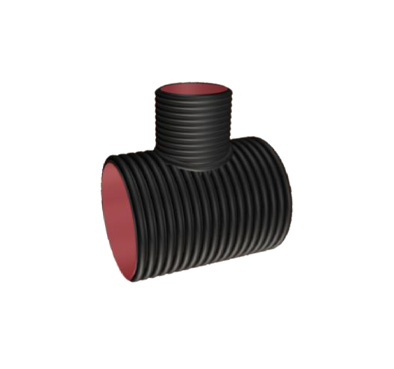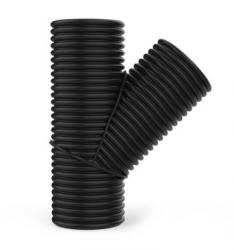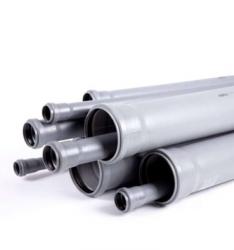.png)
Reducing Tee (HDPE) – Characteristics and Applications
Characteristics:
-
Material Composition:
The reducing tee is manufactured from High-Density Polyethylene (HDPE), a thermoplastic material known for its excellent strength-to-density ratio. HDPE provides high chemical resistance, flexibility, and toughness, making it ideal for a wide range of piping applications. -
T-shaped Design with Reduction:
The fitting features a traditional T-shape with three outlets. However, unlike a standard tee, one of the outlets (usually the side branch) has a smaller diameter than the main line, allowing for a smooth transition from a larger to a smaller pipe. -
Mechanical Strength:
HDPE reducing tees offer excellent impact resistance, tensile strength, and durability under high-pressure conditions. They perform well in both buried and above-ground installations. -
Environmental Resistance:
Resistant to:-
Corrosion (including electrolytic and chemical corrosion)
-
Abrasion
-
UV radiation and oxidation, helping maintain long-term integrity even under outdoor exposure
-
-
Leak-proof Performance:
When installed correctly, the fusion-welded joints ensure a leak-free connection, reducing maintenance and water loss in the system. -
Longevity:
HDPE fittings, including reducing tees, have a service life of 50 years or more under normal operating conditions, making them a cost-effective and sustainable choice.
Applications:
-
Branching to Smaller Diameter Lines:
Used to divert the flow from a main pipe into a secondary branch with a reduced diameter, especially when different flow capacities or pressure zones are required. -
Water Supply Systems:
Widely used in municipal, residential, and commercial water distribution networks where flow needs to be redirected to different buildings or zones. -
Agricultural Irrigation:
Ideal for drip or sprinkler irrigation systems where water needs to be distributed from a main pipe to smaller pipelines or emitters. -
Industrial and Chemical Pipelines:
Suitable for the transport of non-aggressive and aggressive fluids, including slurries and chemicals, thanks to HDPE’s chemical resistance. -
Stormwater and Drainage Systems:
Supports effective distribution or redirection of excess rainwater, reducing the risk of flooding or erosion. -
Mining and Slurry Lines:
Used in rugged environments due to its ability to withstand abrasive materials and high flow velocity. -
Ease of Installation:
Compatible with butt fusion, electrofusion, or mechanical joints, allowing quick and reliable installation with minimal labor and equipment requirements.
.jpg)
.jpg)


